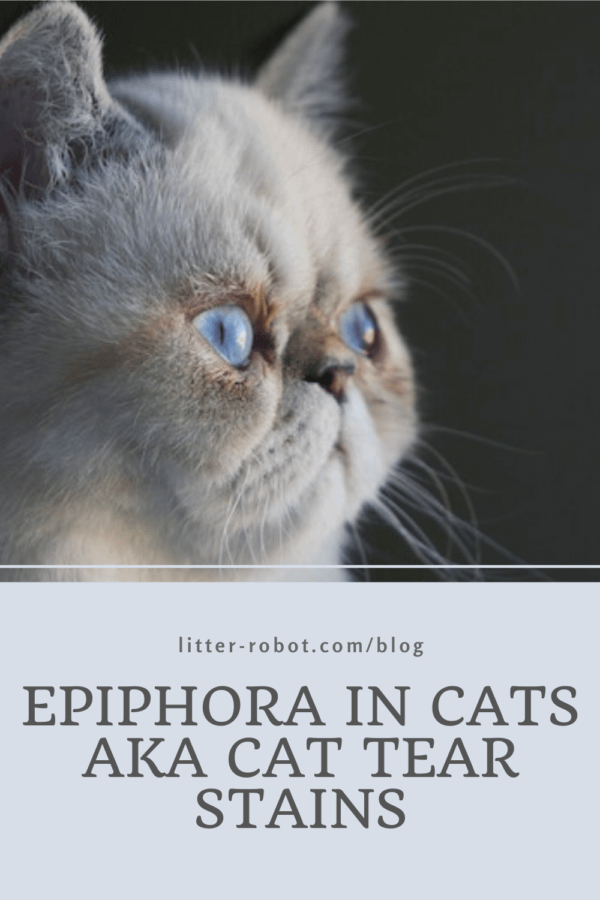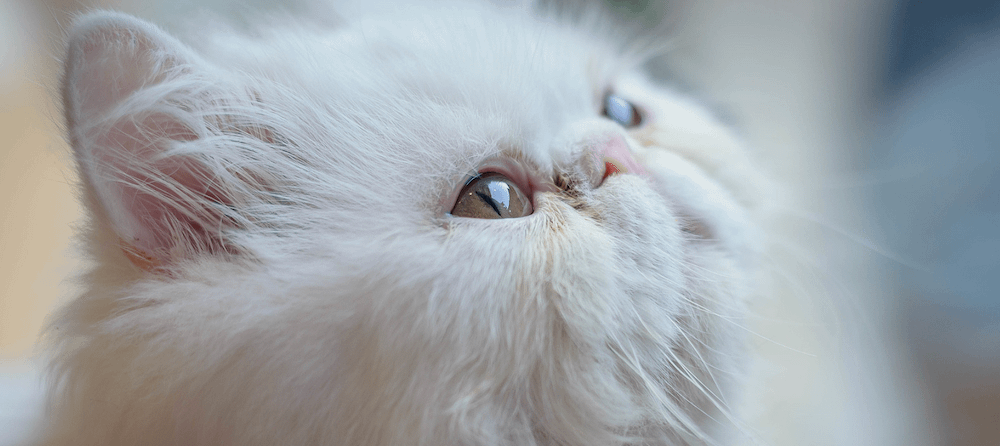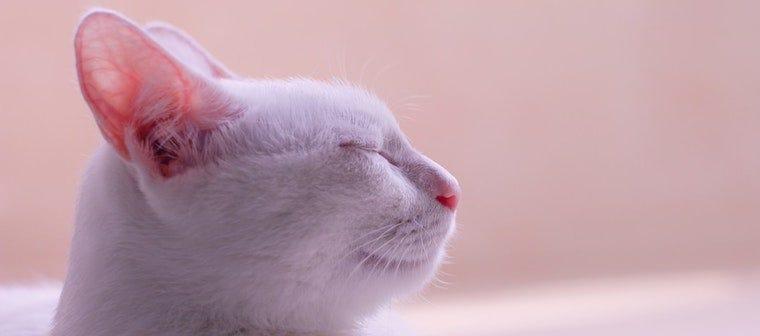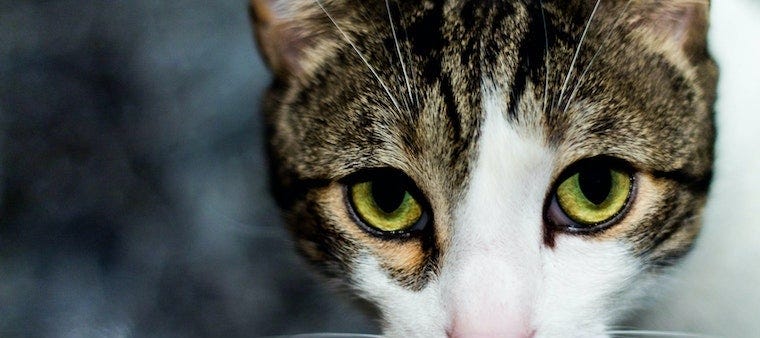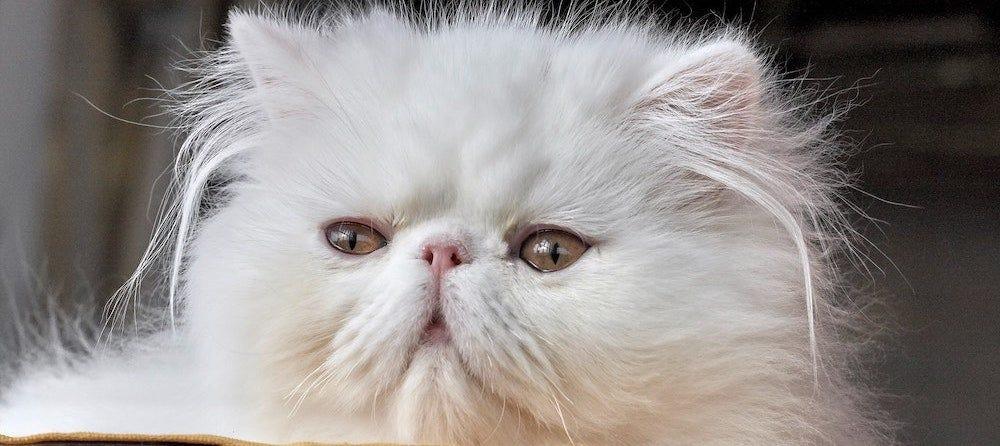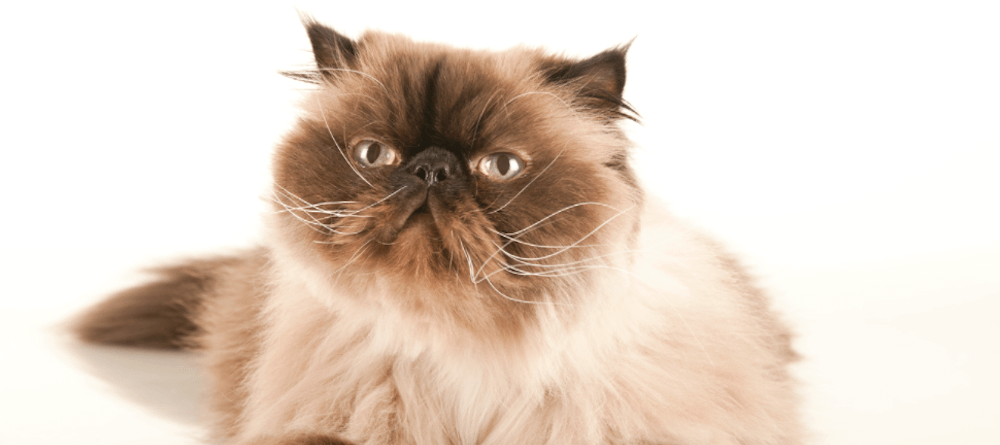Epiphora is a type of cat eye discharge that pet parents might commonly refer to as cat tear stains. Learn why this type of discharge is more common among certain breeds, including Persian and Himalayan, as well as how to treat epiphora in cats.

What is epiphora in cats?
Epiphora is a term used to describe excessive tear production, a symptom that is associated with multiple conditions or diseases. It commonly manifests as dampness on your cat’s face, as well as cat tear stains that look like reddish-brown streaks. Epiphora is most often associated with insufficient tear drainage.
“Epiphora is extremely common among many cats and dogs. This type of cat eye discharge is usually nothing more than a cosmetic nuisance, but it is important to note what’s normal eye discharge for your cat because if it changes, it might be a sign of serious health problems.” - Laria Herod, DVM
Can cats cry?
Yes, cats can technically cry tears, as seen in the epiphora condition we’ve described. However, cats do not cry tears because they are sad or in pain. Instead of crying, cats may meow excessively or hide when they are in distress.
What causes epiphora in cats?
The most common cause of epiphora is insufficient tear drainage due to “a blockage of the nasolacrimal ducts or poor eyelid function due to a deformity,” according to DVMs Dr. Ryan Llera and Dr. Ernest Ward.
Other causes of epiphora in cats include:
- Conjunctivitis
- Ingrown eyelashes
- Allergies
- Eye injury
- Eye infection
- Corneal ulcers
- Glaucoma
- Environmental exposures (secondhand smoke, etc.)
Tear stains are more common among these cat breeds
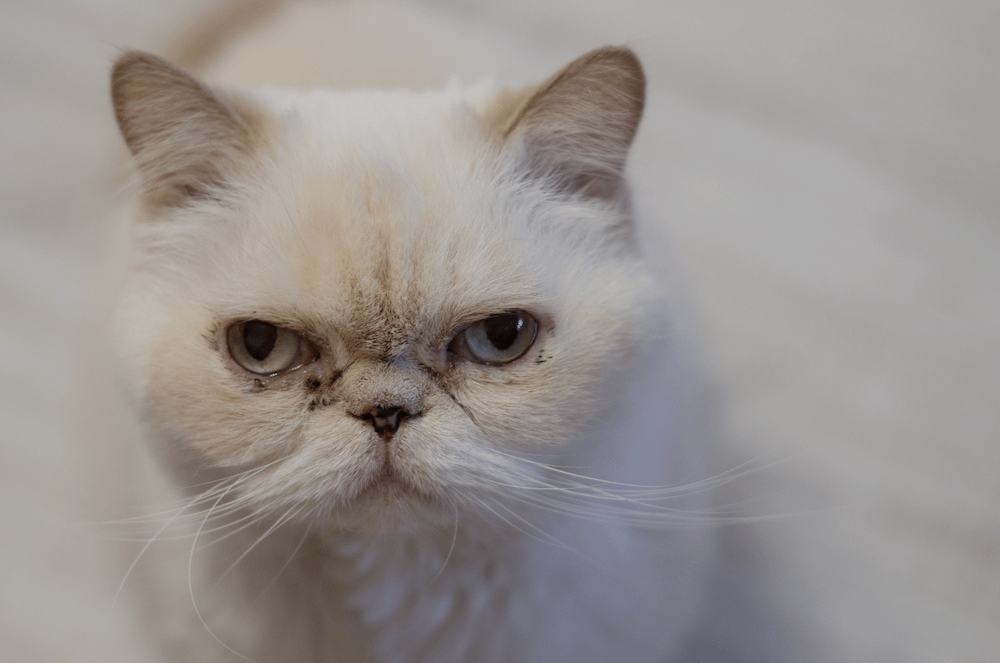
Persians, Himalayans, Exotic Shorthairs, and other cat breeds with flat or squished-in faces (also known as brachycephalics) most often display cat tear stains. This is because these breeds technically have facial deformities that do not allow the tear film to drain properly—“the tear film fails to enter the duct and simply rolls off the face.”
What is the cat eye discharge?
If you see cat eye discharge that is reddish-brown, this could indicate an infection as a result of your cat’s fur under the eyes being constantly wet. Your cat’s face may have a slight odor, as well. If you’re concerned that the discharge is more than your cat’s normal epiphora, schedule an appointment with your veterinarian.
How do you treat epiphora in cats?
Although cat tear stains aren’t typically an issue, you should take your cat into the vet for an examination to rule out any serious health concerns. The vet may suspect that your cat’s nasolacrimal duct is blocked; if that is the case, your cat will be put under anesthesia and a special instrument will be inserted into the duct to flush out the contents.
Treatment for epiphora in cats will also depend on whether another eye condition has been diagnosed. For instance, a diagnosis of conjunctivitis will typically require antibiotic ointment or eye drops.
How to clean tear stains on cats
There are multiple over-the-counter products that claim to help clean pet tear stains. Ask your vet for suggestions on specific products, as not all of these have been proven effective or even safe.
Here are three tactics for how to clean tear stains on cats safely:
- Gently wipe your cat’s face at least twice a day with a soft, warm, damp cloth.
- Keep your cat’s face hair trimmed (particularly the hair around the eyes).
- Make regular appointments with a groomer, if necessary.
Other best practices for improving your cat’s overall health—including eye health—are feeding a high-quality, balanced diet; providing fresh, filtered drinking water instead of tap water (which can be high in mineral content or iron); maintaining a clean litter box by scooping daily or switching to a self-cleaning litter box, and replacing plastic food and water bowls with stainless steel, porcelain, or glass.
Herbs that are considered safe for cats may be used to clean tear stains, including witch hazel, echinacea, licorice root, cat’s claw, and dandelion root. If your cat is not bothered by the staining, cleaning with water is recommended over an herb as you don’t want to accidentally introduce them into the eyes.
Do NOT use human products on cats without consulting your veterinarian first; this includes human eye drops, products containing hydrogen peroxide, topical apple cider vinegar, milk of magnesia, makeup remover, Gold Bond, corn syrup, and so on. While your intentions may be genuine, the consequences could be severe and a quick vet appointment can prevent that.
Sources:
- Eye Discharge (Epiphora) in Cats
- Disorders of the Nasal Cavity and Tear Ducts in Cats
- Diseases of the Lacrimal System and Third Eyelid. What Every Clinician Must Know About Diagnosis & Therapy
